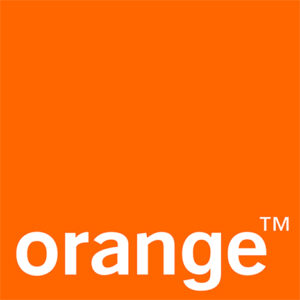
Choosing colour in logo design can be hard. The possibilities are endless, so how to know which palette is best for your brand. The Creative Blog tells:
“The human mind is highly responsive to visual stimuli and colour is one of the major defining factors in that response”.
Colours are an essential part of the design process, knowing the meaning behind makes a huge difference, as certain hues can elevate or plunge a brand.
Before you start with names and shapes, you should have an idea of the colours that best represent your company culture. You should take the time to find a colour palette that conveys the right message for your brand.
“I found that I could say things with color and shapes that I couldn’t say any other way”
Georgia O’Keeffe
Colours convey emotions, and those emotions vary from country to country. What for a culture means purity or joy may means something completely different in another. Your culture informs the way you see colours.
If you think pink is for girls, you may be disappointed to find out, several Asian cultures see pink as a symbol of male strength.
Also, you have to understand the colour wheel in order to use the right combination. If you don’t know how this influence perception, you risk giving the wrong message and that’s the last thing you want for your brand.
The Meaning of Colours
Red

In Western culture red means passion, energy, warm, and excitement. Because of that, it’s widely used in energy drinks, toys and games companies.
Red also denotes violence, aggression, anger, and caution. In Asian and Eastern cultures red brings luck and good fortune. In India, red means purity and in some parts of Africa death. Red in Latin America is associated with religion, especially when used with white.
Blue
Western civilization sees blue as the colour of relaxation, and serenity. Blue is used by top brands as it denotes professionalism and trust. Tech and communication companies notably use blue in their logos.
On the flip side, blue means melancholy and depression. We all have heard the phrase “winter blues”, in Western countries blue is often associated with a low mood. In India Blue is the colour of Krishna and in China is linked to females rather than males.
Green

Green relates to the earth, nature, fresh products, and raw materials. For this reason, it’s used by organic brands. Green is also used by energy companies to emphasize their commitment to being eco-friendly.
Green also means growth and is used to sell financial products. Eastern and Asian cultures see green as the colour of health, prosperity, youth and eternal life. In Sudafrica green denotes fertility.
Yellow

In the West, yellow relates to the sun. Yellow makes you smile, it’s friendly and cheerful. For this reason, food companies use yellow in their logos.
Although, in countries like France and Germany this colour means betrayal, jealousy, weakness, and contradiction. In some parts of Africa yellow is associated with gold. And in certain Asian cultures, yellow means luck.
Purple

In European cultures, purple means royalty, wealth, exclusivity, and power. In the past, only royal families could afford to buy purple costumes.
For this reason, purple is associated with luxury. Luxury goods and high-end products use purple in their logos. In few European countries, Brazil, India, and Thailand purple means death.
Pink

In Europe and the Americas pink is considered a girly, feminine, loving and caring colour.
Pink relates to baby girl products. Unlike, certain Asian countries where pink is often associated with males. Although, in China, not long ago, pink was considered a foreign colour.
Orange

In many countries, orange relates to cutting edge ideas, curiosity, openness, and creativity. Orange, is used for youth products as well as innovative technology.
In Asian cultures, orange means happiness, courage, and health. In Middle Eastern countries orange is associated with mourning.
White

In theory, white is not a colour, it’s the sum of all colours. Many high-tech products use white because it represents purity, peace, clarity, simplicity, and precision.
Also, in the West, white relates to high fashion, medical and dairy products. In Asian countries, white is the colour for mourning and unhappiness.
Black

Contrary to white, black is the absence of colours. Black indicates elegance and sophistication, widely used in the fashion industry. Although, it’s associated with death, in Asia black represents masculinity, wealth, and affluence.
In the Middle East and other Asian countries black means evil. While in Africa black has esoteric connotations.
Conclusion
As we’ve seen in this article, cultural factors are one of those things to consider when choosing the right colours for your logo design. Colours ignite countless responses, and those responses are often unconscious.
We perceive colour according to our culture. The way we think and see the world has a huge influence on how we perceive colours. As we’re exposed to colours all the time, it can feel a bit oversaturated. This constant input of shapes and hues makes it harder to judge which ones are best.
International brands, often use a multicolor palette, as it gives the impression of openness and inclusion. Choosing a colour in logo design takes time, but it can be fun. It’s all about evaluating the alternatives, contrasting, picking the right shade and bringing to life the best emotions for your brand.

